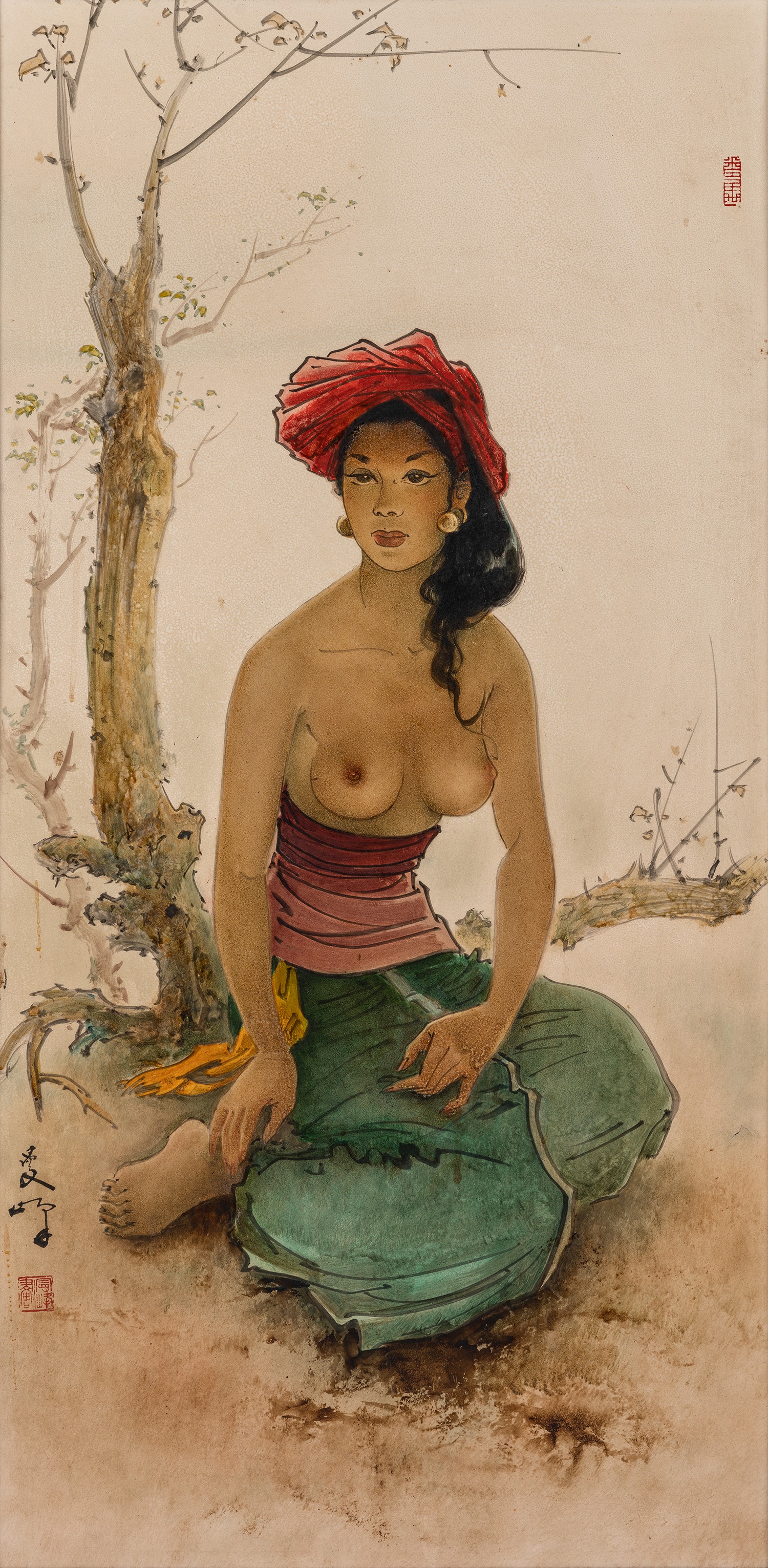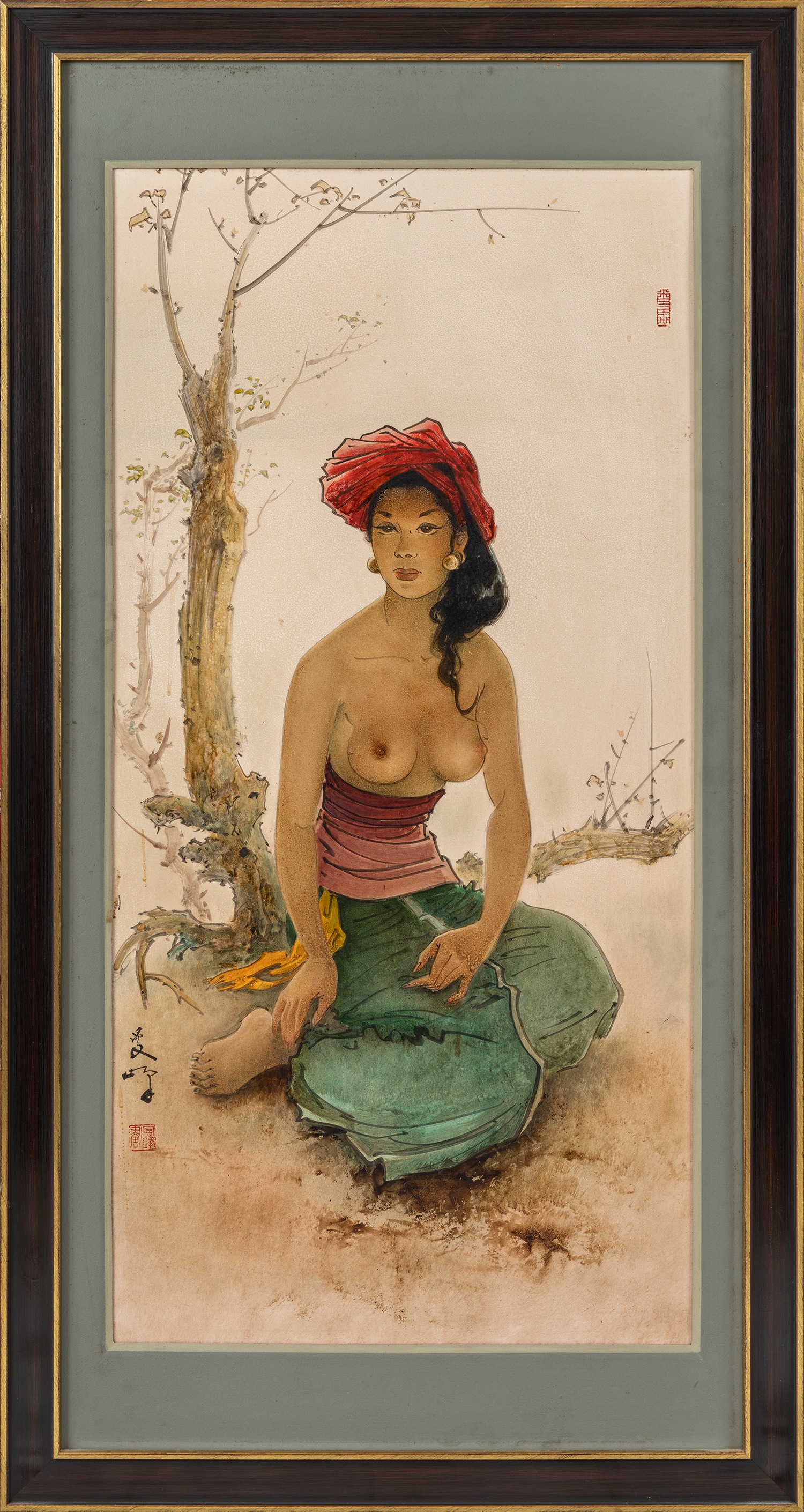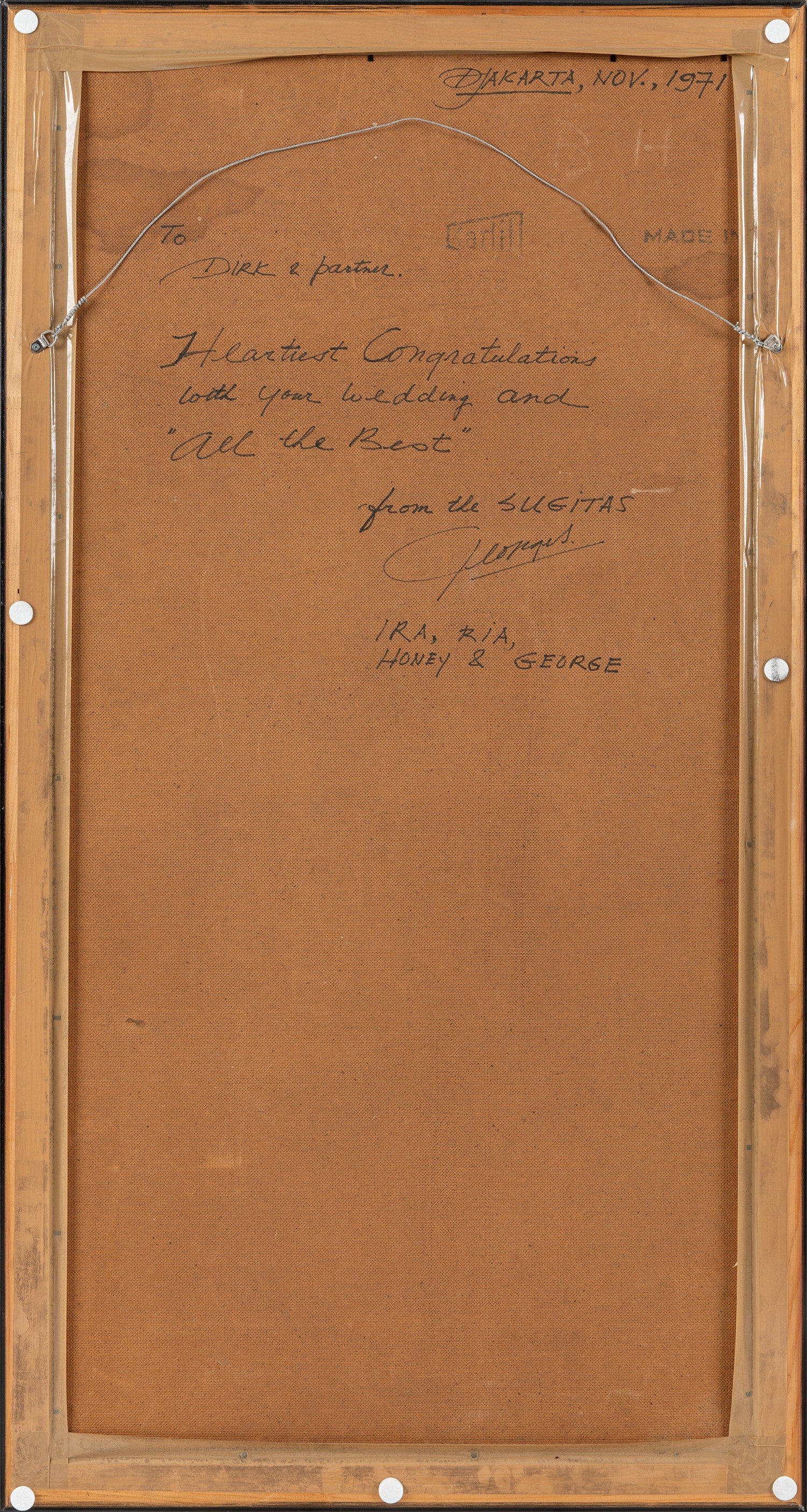





229
Lee Man Fong
Portrait of a Seated Woman
signed 'Lee Man Fong [in Chinese]' and stamped with an artist's seal lower left and upper right respectively
ink and oil on panel
105 x 51 cm. (41 3/8 x 20 1/8 in.)
Painted circa 1970.